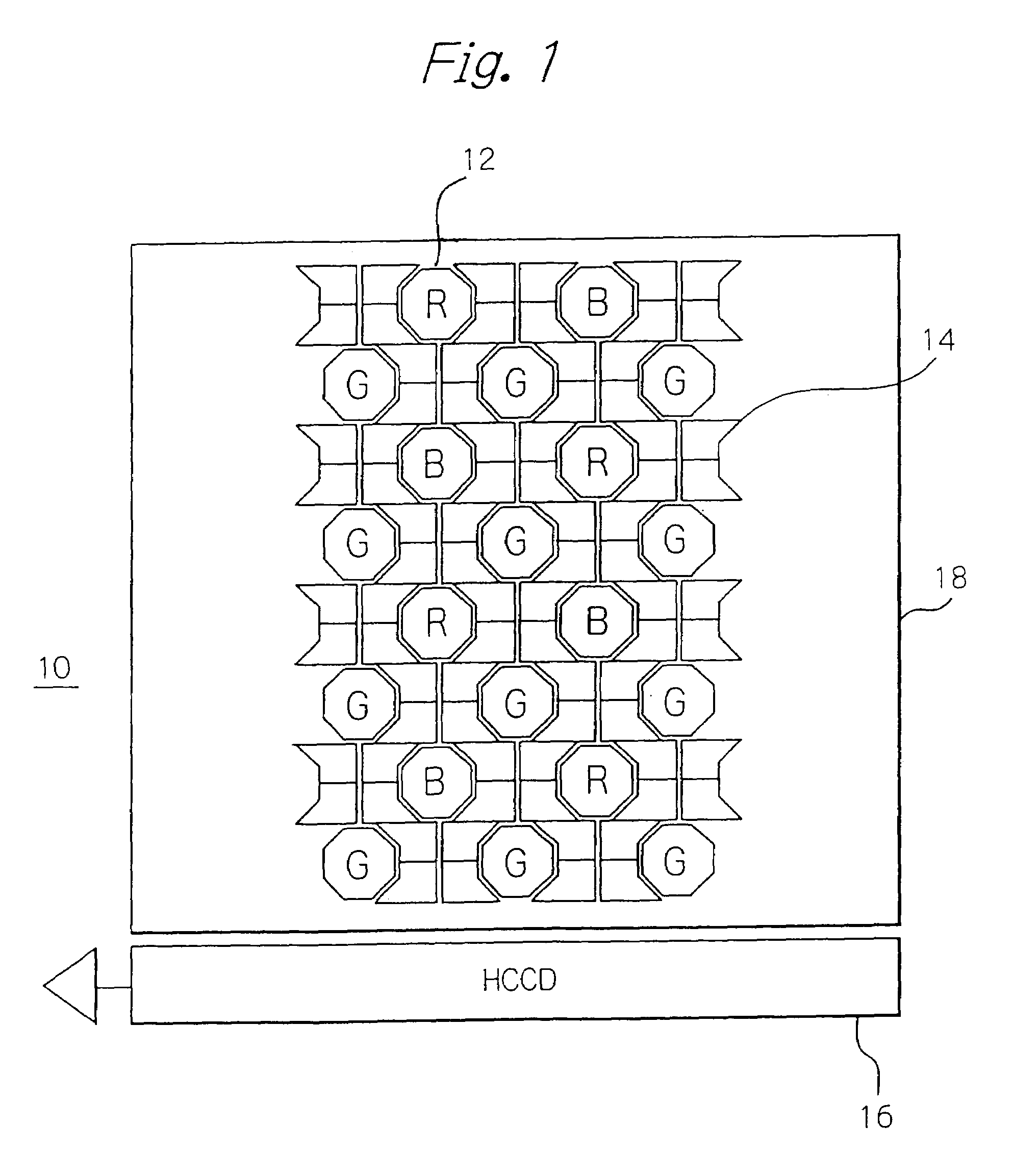Solid-state image sensor with the optical center of microlenses shifted from the center of photo-sensors for increasing the convergence ratio
a technology microlenses, which is applied in the field of solid-state image sensor, can solve the problems of poor incident light quantity, poor luminance of produced signals, and the inability of primary photosensitive cells to identify the level of incident light exceeding a certain intensity level, so as to prevent image quality from being degraded and reduce the sensitivity of low-sensitivity cells
- Summary
- Abstract
- Description
- Claims
- Application Information
AI Technical Summary
Benefits of technology
Problems solved by technology
Method used
Image
Examples
Embodiment Construction
[0030]Preferred embodiments of the solid-state image sensor in accordance with the present invention will be described hereinafter. Briefly, in the illustrative embodiments described, each of the photo-sensors forming a photosensitive array includes a set of, e.g. a pair of, photosensitive cells and a microlens. The photoelectric sensitivity, or transduction efficiency, of the photosensitive cells differs from each other in terms of the size of the opening regions, or optical aperture areas. This successfully broadens the dynamic range.
[0031]Further, the microlenses of the photo-sensors causing light to respectively converge to the opening regions of the photosensitive cells are conveniently formed so that each of the microlenses has its center shifted from the center of the photo-sensor. Consequently, particularly in vicinity of the edges of the photosensitive array, the convergence or concentration ratio of the photosensitive cells, especially low-sensitivity cells, is increased, ...
PUM
 Login to View More
Login to View More Abstract
Description
Claims
Application Information
 Login to View More
Login to View More - R&D
- Intellectual Property
- Life Sciences
- Materials
- Tech Scout
- Unparalleled Data Quality
- Higher Quality Content
- 60% Fewer Hallucinations
Browse by: Latest US Patents, China's latest patents, Technical Efficacy Thesaurus, Application Domain, Technology Topic, Popular Technical Reports.
© 2025 PatSnap. All rights reserved.Legal|Privacy policy|Modern Slavery Act Transparency Statement|Sitemap|About US| Contact US: help@patsnap.com



